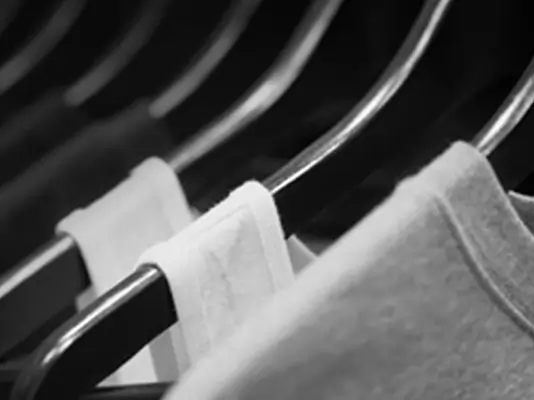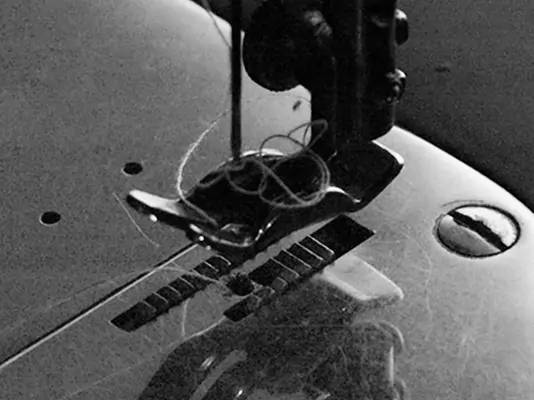Manufacturing strategy for fashion garments
Chandrachur Datta & Dr. Shelja Jose Kuruvilla

Indian textiles and apparels have a history of fine craftsmanship and global appeal. Cotton, silk and denim from India are highly popular abroad, and with the upsurge in Indian design talent, Indian apparel too has found success in the fashion centres of the world. In spite of this, textile exports have stagnated (see image). India had ranked second between 2014-2017. However, since 2018, the country’s position fell to the fifth, according to Confederation of Indian Textile Industry.

The stagnation in the textile industry has been attributed to rising input costs. The industry no longer enjoys a low-cost advantage like it used to. Mass manufactured basic garments like socks, t-shirts, underwear, etc. which form the staple of large integrated textile manufacturing units are no longer as profitable as they once were. At the same time, Indian garment exporters (unlike those from China, Turkey etc. who went through the same issue of increasing labour costs, some years back) have not been able to capture a larger share of the more lucrative fashion garments trade. Formal clothing and fashion-wear accounts for a major chunk of the global trade and could add substantially to export volumes, revenues and margins. But these are not a significant part of India’s export basket . That’s because fashion garment buyers demand from their suppliers
- 1.excellent design capability and aesthetics
- 2.a supply chain that can manufacture and deliver small lots efficiently
Indian companies can match design aesthetics with that of other companies around the world. However, without economies of scale (each fashion garment order contains small quantities of different styles, and these styles are not repeated), production costs go up, and consequently, the margins are eroded. Since textile manufacturing practices are primarily geared towards leveraging (the increasingly non-existent) ‘low-cost’ advantage, large Indian garment manufacturing companies often find it unviable to take up such orders. The industry realizes that it needs to shift gears. However, this is not easy!
Limitations of the existing textile manufacturing practices
The assembly line of a typical garment manufacturing plant consists of several activities. First, fabric is cut into panels. Then depending on the kind of styling, the cut panels may go through printing, embroidery etc. Finally, the panels are stitched together to form a garment. At this stage, the fit, styling, and final look of each piece is determined. There are several types of stitching. Attaching a sleeve is different from attaching elastic on stylish underwear. ‘Stitching’ may also involve heat transfers (e.g. adding size print on the back panel of an underwear) or attachment of trims (e.g. buttons/zippers/labels).

Time required to complete each of these tasks is carefully estimated at a very early stage of planning. This is done to monitor and protect efficiency of a textile manufacturing unit. Details of activities and the respective time requirement is recorded in a document called the ‘Operation Bulletin’. The total time estimated to prepare a piece of garment is called Standard Allowed Minutes (SAM). Based on this estimate, resources/labour are allocated to these activities to create a fairly balanced line for production.
In India, since labour costs are still considered relatively low (compared to automation), almost all activities tend to be labour-intensive. The labour force tends to be a mix of skilled, semiskilled and unskilled (newly-trained) workers. There is also a lot of churn in the workforce since attrition in this industry is quite high.
The key to ensuring low costs in such labour intensive, large garment manufacturing plants is limited product range and large production runs. For instance, in a typical garmenting plant, a particular style would often run for months. In the first few days, when the style is introduced, the workers take some time to familiarise themselves with the requirements of the garment and develop the required skill. But since the tasks are repetitive and soon standardised for each resource, very quickly the efficiency (SAM) becomes high. This means that the company is not only able to keep the costs low, it can also estimate this cost with a fair degree of accuracy upfront. So, the prices quoted based on this costing are always adequate and margins planned at this point are protected after manufacturing. Most manufacturing units in India are currently optimized to work on this manufacturing strategy.

However, with fashion garment manufacturing orders – characterized by varied designs and no/very few repeats, the story changes. Run time for each SKU is short. Moreover, for each style or SKU in a fashion garment order, the kind of skill set needed to execute those orders will be different. Without repeats, every style involves a new learning curve and a line can take three or more days to reach the desired efficiency levels! For example, since the run time of a style can be as low as 4-7 days, run traditionally, a garment line might hit the desired efficiency only on the last day! Consequently, the overall level of efficiency of fashion lines will always be low compared to traditionally enjoyed levels and is often highly unpredictable.


If, an attempt to improve SAM makes workers rush, or if new workers (unskilled) are added to increase output, there is the possibility of mistakes being made in any of the stages in the line. If left unchecked by in-line quality control, these may flow through right till the end and ruin the styling in the eyes of the buyer (jeopardizing future orders from the retailer). On the other hand, wasting too many pieces from the assembly line due to defects, can also lead to inadequate production, high and varying lead times and consequently frequent delays in final shipment. The situation is much worse when customers require components of an order in an assortment. If there are shortages in any one component due to high defects, the complete order will have to wait till the missing items are made from the yarn/fabric stage onwards!
In this environment, without any predictability of SAM, the company will find it difficult to clearly estimate cost upfront while negotiating with customers. This puts them at a serious disadvantage. Pricing higher to buffer against potentially higher lead time and costs will see the order slip from their hands; pricing without any buffer can very often lead to the entire margin estimated during the initial costing getting wiped out during manufacturing!

If Indian exporters hope to serve their International retail customers with higher margin fashion apparel, they will need to rethink their manufacturing strategy and practices and find a solution that will ensure higher output, lower cost of production and timely delivery of orders.
Solution that does not work
The ubiquitous approach in textile production –drawing up and following the monthly plan –only worsens capacity wastage in such environments. Very often, for each order to be completed, a full assortment of various types of fabric (different GSMs (thickness), different colors of material) and trims have to come together in garmenting. Usually, in these plants, planning for these martials starts as soon as an order is accepted. As different materials have varying, and sometimes, high lead times, it takes time to complete the full kit needed for garmenting. For example, fabric made internally in an integrated plant may be readily available but trims which are sourced from vendors may be delayed. So, in the meantime, to prevent starvation of capacity, the monthly plan is often violated and the initial work centres are kept busy processing whatever materials arrive, even if these are not needed immediately. As a result, many other orders are delayed. Expediting these delayed orders forces changes in the production schedule. Consequently, significant capacity is often lost in these forced changeovers. Further, since work progresses in fits and starts on each order, pile-ups happen in front of work centers – WIP and raw material inventory balloons as the month progresses. As the full kits start getting ready, the remaining time (capacity) available in the month, to complete the entire plan often falls short. A lot of work spills over to the next month.
This method of operations, as evident, makes lead time of production high and highly unreliable even when the product mix is stable and load to capacity is fairly predictable. So, even while manufacturing regular garments, in spite frequent expediting, orders cannot often be dispatched in time. The situation significantly worsens when the plant is processing fashion garments using monthly schedules. While manufacturing fashion garments, one cannot match load to capacity because capacity cannot be well defined and task durations cannot be predicted. So, all typical scheduling tools (which are based on these assumptions) completely fall apart.
Direction of solution
Therefore, the only practical solution that can help textile exporters improve efficiency and output is one which does not attempt to control these and instead manages orders using principles of flow management.
Principle 1: WIP control instead of monthly planning and scheduling
An incorrect capacity definition in planning leads to the problem of either too many or too few orders on the shop floor. In most textile manufacturing environments, it tends to be the latter. Unfortunately, interruptions to flow are inevitable if the resources have visibility to too many orders and they have an opportunity to cherry-pick orders based on batching considerations, ease of processing etc. Limiting orders released onto the shop floor and enforcing a rule of only allowing a new one to be taken up when any one currently being worked upon is completed can ensure that future orders do not jump the queue.
Further, a simple priority mechanism based on relative closeness to the due date can create an understanding at each work centre about what is truly urgent. This can ensure that the right orders get picked up for processing and that there is synchronization between various departments.
Principle 2: Full kit instead of scheduling based synchronization
Since plans go haywire within no time, there is no way to achieve synchronization by doing a “required by date” planning. Starting work without complete material, trims, submission of GSS samples to customers etc. with the hope that they will come through just in time when it is actually required, can lead to disruption of flow of an order. So all preparatory work have to be completed before an order is taken up for processing. For instance, a preparatory team has to create a bank of full kits of sales orders with completed fabric, trims, and approvals to ensure continuous running of the stitching operation on correct orders.
Principle 3: Keeping track of ‘Flow’ of orders instead of tracking components
To ensure on-time delivery of a complete customer order, it is also essential that instead of tracking components, completion of the assortment is managed. All local level measures and targets like ‘daily dyeing output should be 10 tonnes’ or ‘daily garmenting output should be 25,000 pieces’, which can hamper adherence to this objective (by encouraging batching), should be eliminated.
Principle 4: Creating “factory-in-factory” for different product categories instead of multiple lines handling different product mix
In a factory with multiple lines handling different product mix, drastic change in product mix of fashion products creates issues:
- a.Learning curve is jeopardized. For example, people who have learned how to stitch ladies blouses are forced to stitch T-shirts.
- b.The type of products on the line can create different types of constraints upstream resulting in failure to arrange full kit. For example, sudden surge in the orders of jackets might lead to a supply problem from dye house.
This can be addressed by controlling product mix in the factory by creating “factory-in-factory” for different product categories. For example, based on ‘complexity’ of the garment, different lines can be created. TOC Due Date Quotation solution can be employed to quote delivery date of a particular product in each sub-factory.
The managers of each sub factory can be trained to handle the specific problems faced by each category. This will also ensure that the workers engaged in stitching get a better learning curve – they will be making similar products although not the exact same SKUs. This will also ensure that the garment aesthetics of these categories will improve.
Principle 5: Buffering for workers instead of expediting
The SAM estimated during the costing stage serves, at best as a baseline to form a garmenting line. [Ref. Table 1]

While forming the line, it is planned as a balanced line – which means the estimate of individual tasks are taken as the baseline and then they are either clubbed or spread across multiple machines to clock a desired output. This is done with three objectives:
- 1.Reduction in cycle time
- 2.Allocating the available machines/attachments to fulfil the requirements of different orders
- 3.Reduction in wastage of manpower – all work centres where effective time is less than the cycle time, we have excess manpower (wastage). (This is achieved by bringing effective time of all work centres close to cycle time)

In execution, variability will hit hard and unpredictably – a bottleneck emerging at an operation may slow down the entire line. In the example above, if operation C takes 30 seconds more time in execution, it leads to wastage of every work centre downstream of C while increasing the cycle time by 1.5 times!! The production is certainly going to slow down.

Now, traditionally with very high run time, we can have the luxury of allowing 3 – 4 days for the learning curve of operation C to improve. But, this cannot be afforded in an environment where run time itself is only 6 – 7 days!
In this situation, the only solution is to keep a team of workforce as buffer and keep a hawk eye on the load before each work centre. An indication can be achieved by hourly monitoring of planned vs actual output. As soon as there is clear slowdown of one activity, the buffer resources (labour and machines) have to be used to ramp up in that area. This will prevent wastage in other areas and output of the line will not drop.
A two-fold improvement process must be put in place to continuously improve:
- 1.Identify such activities where problem happens often –
- a.Monitor the actual time taken by such activities over a period of time.
- b.Devise ways to improve effectiveness of the activity.
- 2.Manpower will have to be trained and deployed accordingly.
Handling the negative:
While this two-fold improvement process might seem apparently simple, it throws up a major problem. Firstly, since the emergent bottleneck can be in any area, the labour used to ramp it up has to be multiskilled. Keeping highly skilled workforce idle until a bottleneck emerges may lead to loss of the workforce (workers may leave). A separate line will have to be created to engage this workforce to process orders (even if not needed in the immediate future). This force can be pressed into service when the need emerges.
Conclusion
Once these processes are institutionalized, their combined effect is a dramatic release of capacity and reduction in lead time. This will not only enable the company to continually increase fashion garments in their product mix and earn higher margins; it will also simultaneously de-stress the entire garment manufacturing process.







